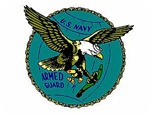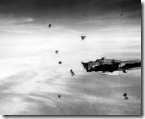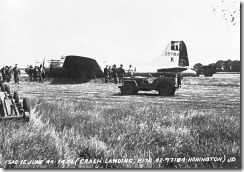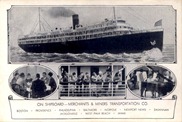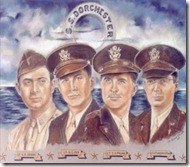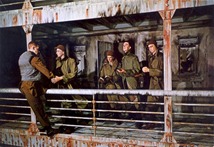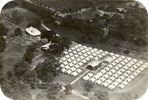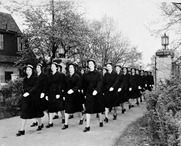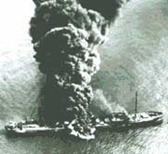Call To Order
Sick Call
In your prayers, please remember Tom Vitale, Dick Dennig, C.A. Lloyd, Labe Magdule, Bob Bouscher, Gerri Korker and all others that are ailing.
Prayer
There was no way to know that this would be the final blessing that Walt Steinsiek would give to our group.
Pledge
Honor Flight Award
Southeast Honor Flight was recently given Governor Charlie Crist’s “Points Of Light” award. Southeast Honor Flight provides free flights to veterans of World War II to visit the World War II Memorial.
To read the story, click here.
In Memorial
WW Gurney E. Newlin
The Gurney E Newlin was an American Steam tanker that was put into service on 14 May 1942. It carried a complement of 59 troops, 39 Merchant Mariners and 20 Navy Armed Guard.
In late fall of 1942, the SS Gurney E Newlin was in transit from New York to Manchester as part of convoy HX-212. In the late hours of 27 October 1942, U-436 fired a torpedo at the convoy hitting the Frontenac. Minutes later, three torpedoes were fired sinking the Sourabaya and damaging the Gurney E Newlin. Three troops in the engine room of the Newlin were killed, one officer and two crewmen.
Within minutes, the remainder of the Newlin’s crew, eight officers, 32 crewmen and 19 armed guard, abandoned ship. Twelve of the survivors were picked up by the HMCS Alberni (K103). Thirty one crew members and thirteen armed guard were picked up by the Bic Island, a Canadian ship.
On 29 October 1942, the Bic Island was torpedoed and sunk by U-224. Eighty-one survivors were picked up by the HMCS Alberni.
William R. Stevenson, Guest Speaker
President of the Florida Sons of the American Revolution, William R. Stevenson, was the guest speaker at the breakfast on April 17, 2010. He appeared in the uniform of a Naval Officer. Only officers, not regular Navy, were issued uniforms. An officer’s uniform during the American Revolution depicted the gentleman’s social standing, separating him from the regular navy. A little history on the uniform follows.
The First Uniforms; Revolutionary War to 1798
From The Department of Navy Library
From its inception, the United States Navy utilized as officers men who were generally a product of a higher social order. By becoming a naval officer, a man merely transferred the condition and aspects of his background into a different profession. He would not foresake his code of conduct, educational level, mannerisms, or least of all his dress by adopting a new means of livelihood. Thus the earliest officer uniforms identified the wearer as a gentleman of the maritime profession. His clothes closely paralleled the cut of civilian garments with color and accoutrements representing his nautical affiliation.
The initial attempt at a uniform for naval personnel was addressed by the Continental Congress in 1776 and exclusively dealt with the officer community. The dress prescribed was extremely somber and reflected the attitude of the Congress to eliminate the ornate trappings evidenced in the Royal Navy and move towards a democratic society. The naval officers quickly rebelled and demanded a more ornate uniform with dark blue coat and tricorner hat, colored facings, and cuffs with gold buttons and lace, a uniform which in fact was strikingly similar to that of the Royal Navy. General guidance was provided for distinctive garments which reflected the high position and authority felt necessary for the naval officer.
After the revolution had ended in 1783, the services were disbanded and the ordeals of privation and strife caused a reluctance to keep any standing forces in the fiercely independent colonies. Also, those who had served as officers were mostly happy to depart and return to merchant activities. Trade would be lucrative and few wanted to remain in the service where pay was infrequent and benefits nil. They had fought for a cause and it had been secured, there was no longer any reason for a professional military.
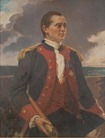 Captain John Paul Jones, by Cecilia Beaux, US Naval Academy Museum Collection.
Captain John Paul Jones, by Cecilia Beaux, US Naval Academy Museum Collection. Jones is wearing a version of the uniform proposed by the Marine Committee of the Continental Congress in 1776, except he lacks gold lace on the waistcoat that indicated the rank of captain. No epaulettes were authorized. The following year some officers called for a change in uniform to blue cloth with white facings, and gold epaulettes. During the battle, Jones apparently wore the newer, unauthorized uniform. Its similarity to the uniform of the Royal Navy aided in his ruse de guerre in closing with Serapis.
 Commodore Abraham Whipple by Edward Savage, US Naval Academy Museum Collection. Whipple is shown wearing the uniform authorized for captains in the Continental Navy: blue with red facings, yellow buttons, and a red waistcoat with gold lace trim.
Commodore Abraham Whipple by Edward Savage, US Naval Academy Museum Collection. Whipple is shown wearing the uniform authorized for captains in the Continental Navy: blue with red facings, yellow buttons, and a red waistcoat with gold lace trim.From The Department of Navy Library
Although pressed for time, Mr. Stevenson recited with great conviction the “Toast to the Flag” and “Old Glory.” The video was not the best quality, for which I apologize, but I have included the words to each for you to read.
by John Jay Daly
Here's to the red of it -
There's not a thread of it,
No, nor a shred of it
In all the spread of it
From foot to head,
But heroes bled for it,
Faced steel and lead for it,
Precious blood shed for it,
Bathing it red!
Here's to the white of it-
Thrilled by the sight of it,
Who knows the right of it
But feels the might of it
Through day and night?
Womanhood's care for it
Made manhood dare for it,
Purity's prayer for it
Keeps it so white!
Here's to the blue of it -
Beauteous view of it,
Heavenly hue of it,
Star-spangled dew of it
Constant and true;
Diadems gleam for it,
States stand supreme for it,
Liberty's beam for it
Brightens the blue!!
Here's to the whole of it -
Stars, stripes and pole of it,
Body and soul of it,
O, and the roll of it,
Sun shining through;
Hearts in accord for it,
Swear by the sword for it,
Thanking the Lord for it,
Red, White and Blue.
I AM THE FLAG OF THE UNITED STATES OF AMERICA. I was conceived in the dreams of liberty and in the hopes of freedom. Though I was never an orphan. I was adopted by the Continental Congress in 1777 and proclaimed the national emblem of a nation newly born on this continent, fighting valiantly for survival and destined to bring to all mankind a new concept of life, liberty and the pursuit of happiness.
I have been many places and witnessed many events in our American history. I was there when they fired the shot heard 'round the world, and when General George Washington became Commander-In-Chief, I was there in the late twilight at Fort McHenry and inspired Francis Scott Key to write "The Star Spangled Banner".
I saw Molly Pitcher take the cannon swab from the hands of her dead husband and help carry on the fight for freedom: I felt the biting cold at Valley Forge and gave comfort to the tired and hungry Continental Army: I rode with Ethan Allen and the Green Mountain Boys and saw the signal that started the midnight ride of Paul Revere.
I was flown above the decks of old "Ironside", and the masts of the "Yankee" and the "China Clippers"; I blazed the trail west with Daniel Boone and Davey Crocket and stood beside them at the Alamo.
I was carried through the halls of Montezuma and the shores of Tripoli; I fell to the ground at Custer's last stand and there were no friendly hands left to pick me up. I galloped up the slopes of San Juan Hill with Teddy Roosevelt and the Rough Riders: I stayed with the boys until it was over, over there, and was with them on battlefields of the Marne, Chateau-Thierry, St. Mihiel and the Argonne forest. I saw many of the youths and manhood of our nation fall and lie still in death. They had-given their last full measure of devotion. The war was over for them forever, but I have kept my lonely vigil over their graves and have stayed to watch the poppies grow amid the crosses, row on row, in Flanders Field.

I was raised by five brave men during the "hell" of Iwo-Jima. I waved farewell to the four immortal chaplains who went down on their ship to honored glory. I proudly waved over our troops fighting to keep the peace in Korea and the jungles of southeast Asia. I have been carried to the South Pole, the North Pole and the moon.
Their purity is remembered in my white stripes;
Their blood has given me stripes of red;
Their souls are cradled in my stars;
And their courage embedded in my blue.
I am many things to many people, I am an inseparable link in the chain that binds men to God and country. I am the, "Red, White and Blue", "the Star-Spangled Banner", "the Stars and Stripes", but I am most commonly known by a nickname given me by a sea captain, who called me "Old Glory".
At this moment, while I fly at peace in turbulent times, men and women from around the world are still striving to reach my shores, to touch and stand beside me, a symbol of liberty, a light of humanity; an emblem of man's faith:
A beacon shining into the darkness;
And here I will always be, for I am the Stars and Stripes forever...
.......I AM OLD GLORY : :
( From speech by COL. HAROLD SHEAR, copyrighted by National Sojourners Inc.), Honor Flight – The Honor Flight Network is a non-profit organization
 whose purpose is to honor our nation's veteran's for their service and sacrifice. The veterans are flown to Washington D.C. to visit their monuments and to reflect on their memories. Priority is given to senior veterans from WWII and those veterans that are terminally ill. If you would like more information about the Honor Flight Network, click here.
whose purpose is to honor our nation's veteran's for their service and sacrifice. The veterans are flown to Washington D.C. to visit their monuments and to reflect on their memories. Priority is given to senior veterans from WWII and those veterans that are terminally ill. If you would like more information about the Honor Flight Network, click here. If you are a south Florida veteran and would like to submit an application for an Honor Flight originating in south Florida, please click here to download the application.
The Pointer - The U.S.N. Armed Guard World War II Veterans Association adopted The Pointer as the name of its publication. The name itself had its origin in the World War II Armed Guard. If you, or someone you know, is interested in viewing The Pointer, issues are available on this website from 2000 onward. There is no cost to receive The Pointer. It is supported solely by donations. If you are interested in donating to The Pointer, please click here.
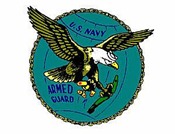

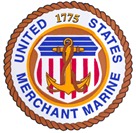

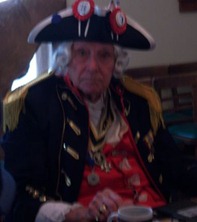


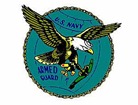

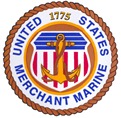

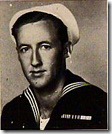
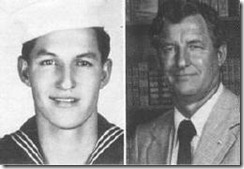
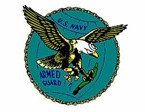



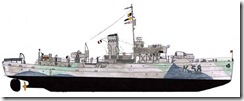

.jpg)




